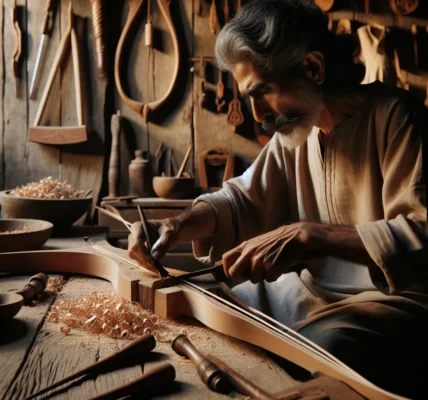History of Archery: From Ancient Times to Modern Day
Archery, the practice of using a bow to shoot arrows, has a rich history that dates back to ancient times. The origins of archery can be traced to the earliest civilizations, with evidence of bows and arrows found in various cultures across the globe, including Egypt, China, and indigenous peoples of North America. In many ancient societies, archery was not only a means of hunting and warfare but also held significant cultural and ceremonial importance.
Throughout history, archery techniques and equipment evolved alongside advancements in technology and warfare. In the medieval period, archery played a crucial role in military conflicts, with the English longbowmen gaining fame for their proficiency in combat. As firearms became more prevalent, the use of archery in warfare declined, but it remained a popular recreational activity and a competitive sport.
In the modern day, archery has experienced a resurgence in popularity as a competitive sport, recreational activity, and even as a form of mindfulness practice. Archery has become an integral part of many cultural traditions and is showcased in international sporting events such as the Olympic Games. The development of modern bows and arrows, as well as the standardization of rules and techniques, have contributed to the widespread appeal of archery as a skilled discipline.
From its ancient origins to its contemporary prominence, the art of archery has transcended time and continues to captivate enthusiasts around the world, demonstrating the enduring appeal of mastering bows and technique.
Types of Bows: A Guide to Traditional and Modern Equipment
The art of archery has a rich history and is a discipline that demands precision, skill, and mastery of various types of bows. Whether you’re a beginner or a seasoned archer, understanding the types of bows available is essential to mastering this ancient practice. From traditional to modern equipment, each type of bow offers distinct advantages and requires a different set of techniques.
Traditional bows such as the longbow and recurve bow have been used for centuries and are valued for their elegance and simplicity. The longbow, with its classic D-shape, is a favorite among traditional archers for its smooth draw and natural feel. On the other hand, the recurve bow, characterized by its curved tips, provides more power and speed, making it popular in Olympic archery and traditional hunting.
In contrast, modern bows like the compound bow have revolutionized archery with their innovative technology. The compound bow utilizes a system of pulleys and cables to provide a mechanical advantage, resulting in a more energy-efficient shot. This type of bow is favored by hunters and competitive archers due to its ability to hold at full draw with less effort, allowing for greater accuracy and longer shots.
Additionally, the crossbow, while not a traditional bow, is worth mentioning for its unique design and historical significance. This bow alternative features a horizontal bow mounted on a stock and is known for its ease of use and ability to hold and aim for extended periods, making it a popular choice for both hunting and target shooting.
Whether you’re drawn to the elegance of traditional bows or the advanced technology of modern equipment, mastering the art of archery involves choosing the right bow for your skill level and intended use. Each type of bow offers a distinct experience and requires dedicated practice to achieve proficiency, making the journey of mastering archery both challenging and rewarding.
The Fundamentals of Archery Technique: A Step-by-Step Approach
The art of archery is a time-honored tradition that requires dedication and precision. Mastering the fundamentals of archery technique is essential for anyone looking to excel in this ancient sport. Whether you are a beginner or an experienced archer, understanding the step-by-step approach to archery technique is crucial for improving your skills.
The fundamentals of archery technique begin with the proper stance. Your feet should be shoulder-width apart, with your body perpendicular to the target. Your posture should be relaxed yet sturdy, allowing for stability and balance as you draw the bow.
Next, mastering the proper hand placement on the bow is essential. The bow should rest in the webbing between your thumb and index finger, creating a solid yet flexible grip. Your other hand, known as the drawing hand, should hold the bowstring with the tips of your fingers, creating a smooth release when the arrow is loosed.
As you draw the bow, proper alignment of your body and the bow is crucial. Your shoulders should be square to the target, and your drawing hand should be at eye level. This alignment ensures consistent and accurate shots.
Finally, the release is perhaps the most critical aspect of archery technique. A smooth and controlled release allows the arrow to fly true to its target. The release should be a seamless extension of your drawing hand’s motion, with minimal interference from the bow hand.
Mastering the fundamentals of archery technique takes time and practice, but with dedication and attention to detail, archers can hone their skills to achieve precision and accuracy with every shot.
Mental Mastery in Archery: The Importance of Focus and Mindfulness
Mastering the art of archery goes far beyond physical technique; it requires mental mastery as well. In the world of archery, focus and mindfulness are crucial elements that can make the difference between hitting the bullseye and missing the mark. The ability to concentrate on the present moment, tune out distractions, and maintain a calm, clear mind is essential for success in archery.
One of the key aspects of mental mastery in archery is the importance of focus. When an archer draws back the bowstring, every ounce of their concentration must be directed towards the target. Any wavering of focus can result in a wayward shot. Through consistent practice, archers learn to block out external distractions and sharpen their focus on the task at hand.
Furthermore, mindfulness plays a pivotal role in archery. It involves being fully aware of one’s thoughts, feelings, and bodily sensations in the present moment without judgment. In archery, mindfulness helps archers to stay attuned to their body posture, breathing, and mental state, leading to more consistent and accurate shooting.
In conclusion, mental mastery, including focus and mindfulness, is integral to the art of archery. By honing these mental skills alongside physical technique, archers can elevate their performance and achieve greater precision in hitting their targets.




